|
|
Roger Kean interview, part 2
|
Following on from part one of our Roger Kean interview, we discuss the aftermath of Newsfield, Europress, the legacy that the magazines left behind and more...
|
|
Out-of-Print Archive: As a reader of Zzap!64 in 1991, it was saddening to see the legendary magazine disappear from the newsagent shelves. It soon became apparent what happened, due to rival magazines running news headlines like "Crash goes Zzap" — relating to Newsfield going into liquidation — but what are your recollections of the events?
Roger Kean: It was a very hard time. It had been clear for months that Newsfield was suffering, but to be frank, the company's financial operations had never kept pace with the magazine production side in terms of new technology. Too much management information was "back of envelope" stuff — one reason for appointing Jonathan Rignall (Julian Rignall's younger brother) as managing director. He quickly rendered all the paperwork systems to a series of Excel files and the spreadsheet he produced told the story. Unless there was a rapid reversal of fortunes, Newsfield could not live in safe solvency beyond March 1992. I made some attempts to persuade Future Publishing to at least buy Zzap off us to keep it alive and hopefully raise some liquidity to make another launch (Sega Force and Nintendo Force), but the negotiations never really took off. And so the directors reluctantly took advice and agreed to a voluntary liquidation, which was set for September 1991.
The horrible part — as anyone who's been through this kind of thing will know — is keeping the outcome a secret from your staff, for all kinds of legal reasons. So the morning that all the staff were gathered together to hear the insolvency practitioner announce the end of the company was simply dreadful. After all, there were as many as 20 people we had worked with for years, let alone the other, more recent additions, who had proved so valuable. Of course everyone, especially those who had been with us since the start, felt betrayed that they hadn't even had a warning, but there was nothing we could do about it. Some took the news calmly, others broke down completely. It wasn't the end of a company, it was the end of a lifestyle. Talking about it still brings me to the edge of tears, 25 years after the event.
OoPA: It wasn’t quite the end of Crash and Zzap!64, though was it?
RK: When Newsfield went into liquidation (September 1991), Julian Rignall's younger brother Jonathan — lad with a financial head on his shoulders — had been recently made managing director. He made contact with the Europress Group and, together with myself and Oliver Frey, proposed a purchase of Newsfield's assets and a saving of some 19 of the staff in new jobs, and so Impact Magazines Ltd was born, resurrected in Newsfield's previous premises at the Case Mill. |
OoPA: The previously planned Sega Force and Nintendo Force could now be launched. How did you feel these magazines turned out, and what was the decision behind splitting Sega Force into two separate titles (Sega Force Mega and Sega Master Force)?
RK: A confusing period! I thought Sega Force was a good magazine, but of course there was the complication of two distinct Sega machines, and I think we wanted to go back to single-format coverage and certainly concentrate on the Mega Drive properly. Nintendo Force did launch, but as N-Force. Old story, Nintendo threatened all sorts of lawsuits if their name appeared in a magazine title. N-Force lost impact as soon as the Super Nintendo came out. Things were happening very rapidly at that period. |
|
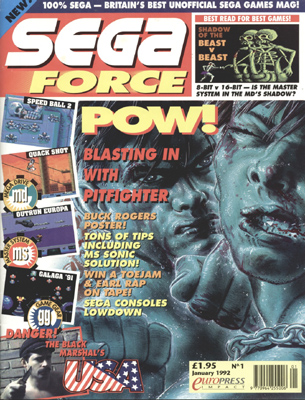 |
OoPA: N-Force was renamed SNES Force by then?
RK: Again, concentration on a single format and with a very hot team dedicated to it in a way I hadn't seen since the earlier Newsfield days.
OoPA: Then Amiga Force launched in the Autumn of 1992. Was this basically a Zzap!64 magazine for the Amiga, now that Zzap!64 was 100% dedicated to the C64 again?
RK: Yes, it was. I refer to my earlier remark about the viability of the Amiga market; Amiga Force never looked like a success, but at that point we were probably grasping at straws. |
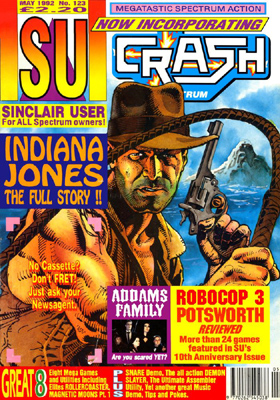
|
|
OoPA: Crash started off the whole Newsfield company, so why was the magazine sold to rivals EMAP, resulting in the title merging with EMAP's own Sinclair User magazine.
RK: The sale of Crash to EMAP was entirely taken by the Europress Group. In fact, it wasn't even a sale, Europress swapped Crash for a defunct EMAP title they wanted to incorporate into one of their magazines. It was a travesty which left everyone in Ludlow speechless. Okay, Crash's best days were long behind it, but to swap it for something else... You might begin to see where those differences of opinion between Impact and Europress began.
OoPA: The Zzap!64 name also disappeared when it was re-launched as Commodore Force during the end of 1992. Why was it felt necessary to re-name the magazine, and so close to its centenary issue, too? |
| RK: Again, a Europress management decision. Their merchandising people (who go round the newsagents checking on how the distributor is doing in selling in) insisted that Impact's output should conform and all use the brand "FORCE" in the titles, so Zzap's days were numbered in its original form. Commodore Force has frequently been vilified by ex-Zzap readers, no doubt with good reason, but it's a shame for the young team that struggled daily to make CF a worthy successor, bearing in mind the almost moribund state of the C64 by then. |
OoPA: Surely one of Newsfield's biggest mysteries was a few of the staff member who appeared in many of the magazines. Just who were Lloyd Mangram (editor of the letters pages) and Paul Sumner (reviewer on Zzap!64)?
RK: Lloyd Mangram was Newsfield's best kept secret for years, even though it must have been obvious to long-term readers that he wasn't real. At the start of Newsfield, we were aware that magazines need a nice long masthead with plenty of names all busy doing different things, but there was only me writing the stuff (including some reviews), Franco doing techie stuff and the lovely Derek Brewster for Adventures, so I tackled the letters pages as Lloyd. Incredibly, one bright young spark wrote in once to say that he was really the famous American golfer Lloyd Mangrum — and he was right! As a former film editor, I had worked on |
|
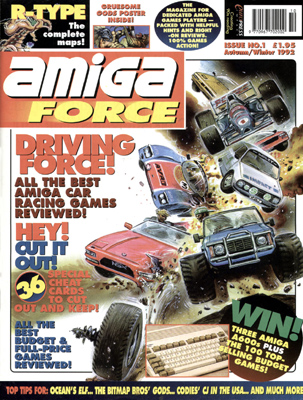 |
many golf films for the BBC and Trans World International, and the ageing Lloyd Mangrum was a hero when, in a British Open, he scored a hole in one on a par-3 hole. I just switched the "u" for an "a".
When I moved to Zzap as editor in mid-85, I took Lloyd with me, but it was too much to do it for both magazines, so after a couple of issues, Crash editor Graeme Kidd had a go at copying the style, and from then on it became a tradition for each editor in turn. As a result, Lloyd did change character a bit here and there, but mostly everyone did a good job.
Paul Sumner was really Dominic Handy, another Ludlow school kid reviewer who graduated into a staff member. When Zzap needed an extra reviewing hand, Dominic was sent for, but Gary Penn wouldn't let him use his real name because he was known as a Crash reviewer. |
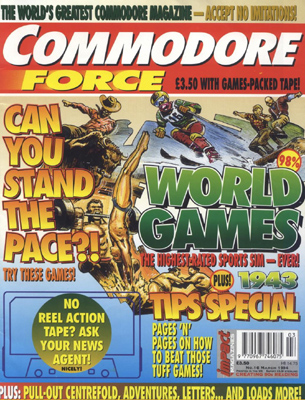 |
|
OoPA: Why did Europress Impact — which was renamed Impact Magazines — close at the beginning of 1994?
RK: Europress were enthusiastic about picking up the Newsfield assets and some of the staff at the start, but I guess their management team began to think it was a drain on their finances that wasn't worth the return. In theory, the three of us were the company's controllers as directors, but in fact Europress never filed the papers and relations between Impact and its parent were never very good, and grew worse over the next two years. For our part, we found they had some weird "Californian" ideas about management, and that's one reason why things grew worse and worse. After a difference of opinion, Jonathan was forced to resign, and not long after, Oliver and I had a serious difference of opinion with Europress and
|
both resigned on 4 March 1994, after which Europress liquidated Impact.
OoPA: What did you do after leaving Impact Magazines?
RK: After leaving Impact Magazines Ltd in 1994, I co-founded Archetype Ltd with 14 of the Impact staff. We produced books on games hints and cheats for Carlton Books, but also CD-shaped books on pop and rock music for them. These had actually started at Impact, and was one of the sore points with the Europress Group, which felt they were diluting the company's focus. In 1995, Archetype was bought by the California-based Prima Communications Group and renamed Prima Creative Media Ltd, continuing to do what Archetype had done, but also producing a higher volume of computer games books for the American market. By 1998 we had started a division named Prima editions, to produce large historical reference books for the international market. When Prima went into a sharp decline after unwise investments in the "dotcom" bubble and threatened closure of its British and German arms, those of us involved with the Editions side — myself, Oliver and Franco Frey, rights manager Ruth Cunney and project editors Warren Lapworth (ex-Zzap staff writer) and Lucian Randall, and production director Matthew Uffindell (Newsfield's first employee in 1984) — made a management buy-out of the assets and set up in January 2000 as Thalamus Publishing, re-using Oliver's logo for long-defunct Thalamus Games.
We shut down Thalamus in September 2009, having published over 50 books in 17 languages and representing 1.5–1.8 million printed copies. The terrible state of the international reference market enforced the closure. I now work from home as Reckless Books doing a variety of things, including running the website www.oliverfreyart.com and publishing ePub novels online at www.smashwords.com and its attendant website: www.recklessbooks.co.uk. I also continue handling the design and printing of books for British School of Motoring, which I have done since the Archetype days. |
OoPA: Have you read any of the Zzap!64 commemorative issues (Issue 107 and The Def Tribute to Zzap!64)?
RK: I have, and did quite a bit of work on the Def Tribute for Rob de Vugt who put it together so well.
OoPA: What's your opinion on the current video games magazine industry?
RK: It continues to do a valuable job; but with the plethora of games, platforms, online and so on, a much harder task than we had. But I have to add that I don't read the magazines very much these days. One thing I have noted is that in the 1980s and early 1990s, Ludlow's newsagents devoted swathes of shelf space to computer-related magazines — they don't today, and I see this reflected in much bigger centres too. I assume this means that fewer people feel the need to read about the games, or at least not in print form. |
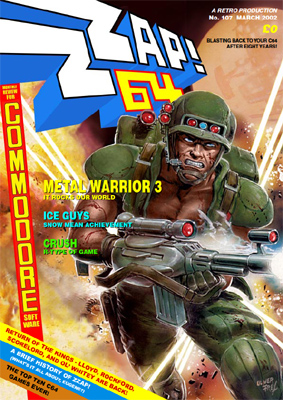 |
OoPA: What do you think of magazine preservation projects like Out-of-Print Archive?
RK: Since the advent of the Internet, so much information is readily available, yet still it's hard to find authoritative and comprehensive material on many things, including old magazines, so I'm all for it! |
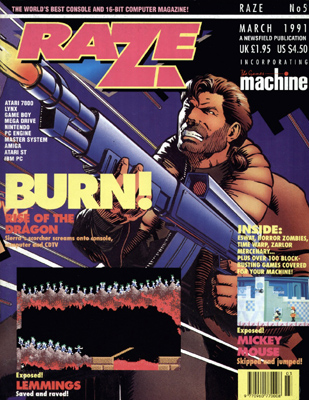 |
|
OoPA: We’ve chosen Raze to work on first of all, as this is really an underrated magazine that needs more exposure, and Issue 1 will be released to coincide with this interview. So thanks again for your permission to work on your magazines, but is there any particular magazine that you would like to see at Out-of-Print Archive?
RK: I'm not sure of your plans for other Newsfield titles, but I would like to see FEAR included at some point.
OoPA: You must have many interesting stories having worked on the various magazines.
RK: Perhaps the untold story of Newsfield is that of production, the guys who slaved away non-stop to get the magazines to press. Newsfield was nothing if not innovative. I think I mentioned the typesetting
|
business in the earliest days, but what was remarkable for a publishing organisation of the mid-80s was the extent to which all our editorial employees had to learn how to "pre-typeset".
Between 1984–1987, we used Apricot computers running MS-DOS and Word, but we had a huge list of what were called Cora Codes, strings that had to be incorporated in the finished text, which told the typesetting machine everything about how to set the galley text for layout: font type, font size, leading, column width, justification, bold-roman-italic, etc, etc. What seemed to any new writer/editor soon became second nature. In this, we were leading the way (one reason why Chris Anderson was so interested in joining). |
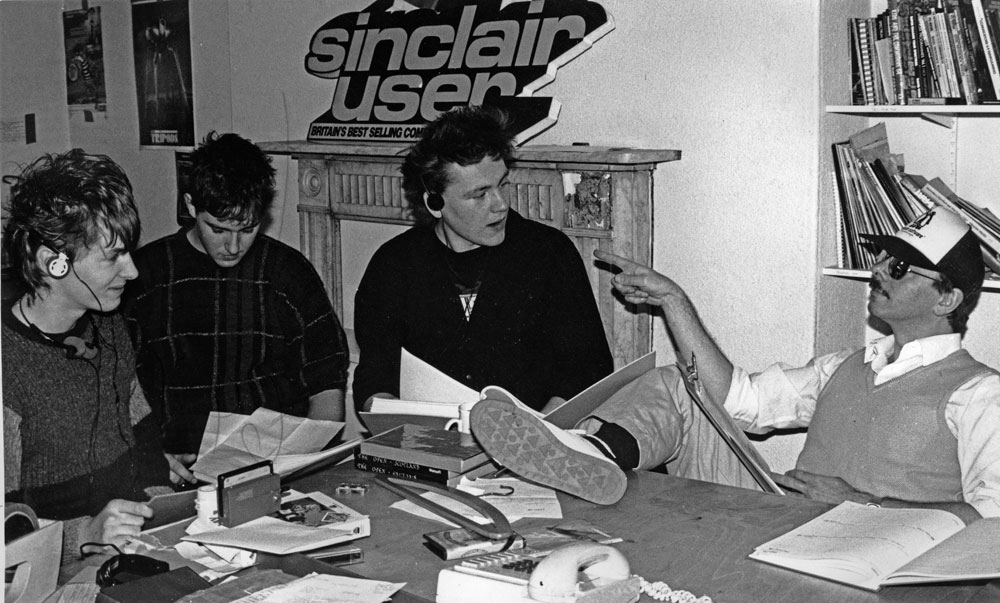 |
| Zzap! editorial, late 1985, King Street. From left to right: Julian Rignall (Software Reviewer), Gary Liddon (Software Reviewer), Gary Penn (Assistant Editor), Roger Kean (Editor) being dictatorial. Note the Sinclair User sign in the background which was "borrowed" from EMAP's stand at the annual computer fair in London. |
However, the costs of having scanning, shooting paper layout to film and film planning itself (the process of merging pictures, text and tints and shooting all the ingredients back to four pieces of film for the CMYK printing) done in London was crippling. Before 1984 was out, we had purchased a huge process camera to shoot our own film and make mono halftones from photographs. The next step was to buy massive light tables and begin the film planning process ourselves in Ludlow. By late 1985 5–6 staff were employed entirely on this mammoth task, and with three titles running to more than 400 pages a month, they got very little time off.
In 1986 I had discussions with Alan Maton, boss of the games publisher Software Projects (Manic Miner, Jet Set Willy and others) about the possibilities of the Apple Macintosh as a complete publishing solution. Alan was a Mac-mad early adopter, but black and white and limited fonts, not to mention the lower quality of text printed on a laser printer didn't cut it. A year later Apple released the Mac II, with colour and font handling that was incomparable with anything. In July 1987 Newsfield purchased its first Mac, with a 21" monitor and a Truvel overhead scanner. Employing the massive 8Mb maximum addressable RAM and a whopping 100Mb hard drive, we began experimenting with going all electronic. In fact, The Games Machine, in planning stage, was targeted to be the first magazine to be worked on entirely on the Mac. At that stage we still had to resort to hand planning the layouts in traditional manner and planning in the colour work. But by 1989 and the move to Case Mill, all the art people worked on Macs and a recently purchased imagesetter was employed to output the final print film. I'm not sure which was the first of the magazines to go 100% electronic, but Newsfield certainly was the first publisher in the world to do so, beating Gollner Publishing and Future by perhaps as little as a few weeks. (America was just SO far behind this kind of thing in spite of being the country of the Mac.) |
 |
| Crash games reviewing technique in action, mid-1984, King Street. Matthew Uffindell (far left) playing a game and dictating the review to Roger Kean. Note the Apricot computer which replaced the typewriter. |
In another first (I think), Newsfield was the first British publisher to use a primitive form of email. The occasion was an interview by the Zzap team with the programmers of Lucas Arts in California. With the telephone plugged into a massive rubber modem connected to Gary Penn's C64 — and obviously something similar at the other end — the interview was conducted entirely through the computer using CompuServe as a form of "Chat Room". It started late in the afternoon and went on well into the night.
An indication of how everyone in King Street felt a part of the whole — though it was never the most popular event of the month — was the regular delivery of subscription copies, which we posted out from King Street until in the later years, these went to the Gravel Hill department. Once a month for each title, a giant 40-ton lorry pulled up outside 2 King Street, completely blocking the road (to the fury of the sole traffic warden who loathed us). The staff were alerted and a chain-gang formed from out in the street, through the door, up the stairs to the second floor, and 12-copy bundles passed from hand to hand until the delivery was complete. We ran competitions against ourselves to see if we could beat last month's speed record, which at least helped keep the traffic warden alive, if apoplectic.
I could probably go on for hours with anecdotes as they come to mind... |
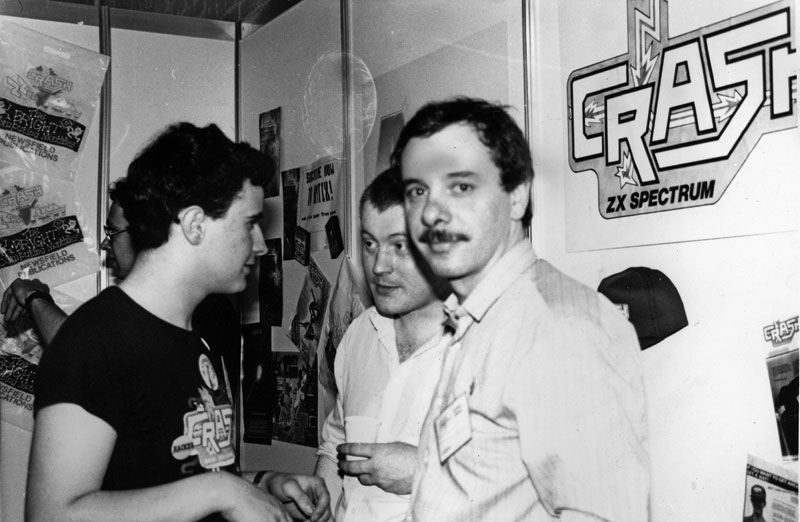 |
| The Crash team at a Tradefair, early 1985, London Olympia. From left to right: Robin Candy (contributing writer; still a schoolboy), Graeme Kidd, (assistant editor, later editor of Crash) and Roger Kean. |
OoPA: How do you feel about Crash and Zzap!64 still being fondly remembered by many people across the globe?
RK: Pleased, obviously. We worked hard to create something new, fresh, different, irreverent yet serious, light-hearted but totally committed to the games and everything about them. I think that in the main, Newsfield became a tremendous training ground for many people who have remained in journalism and publishing since. Above all, we offered many of the local Ludlow school kids of the time an outlet, an education and ultimately jobs. But if Crash and Zzap are fondly remembered, it's because of the uncompromising attitude towards the games under review complemented by the often zany (some called it commercially irresponsible) approach. As Anthony Caulfield's film Classic Games Crusaders says at the start, the problem for the industry with Newsfield's staff is that THEY TOLD THE TRUTH. There's no way I couldn't find it gratifying that those titles still live in so many minds over 25 years later. |
|
| Make sure to check out the Raze magazine archive and let us know your thoughts on this interview and your memories of Newsfield and Europress magazines in our forums. |
|
| Notes: |
• Crash, Zzap!64, Amtix!, The Games Machine and Raze were published by Newsfield Publications Ltd.
• Later issues of Crash and Zzap!64 were published by Europress Impact, which was later renamed Impact Magazines.
• Sega Force, Nintendo Force, Sega Force Mega, Sega Master Force, SNES Force, Commodore Force and Amiga Force were published by Europress Impact, which was later renamed Impact Magazines.
• All magazine scans were provided by Mort at www.Zzap.co.uk.
• Pictures were provided by Roger Kean.
|
| Relevent weblinks: |
• CRASH: The Online Edition. A site dedicated to Crash with a magazine index and n archive of material for those who missed it the first time round.
• The Def Guide To ZZap!64. An online archive of Zzap!64 material, including covers, articles, game reviews, etc. Also home to the Zzap!64 commemorative issues.
• Classic Games Crusader – The Newsfield Years. A documentary that focuses on the story of Newsfield Publications.
|
| |
|